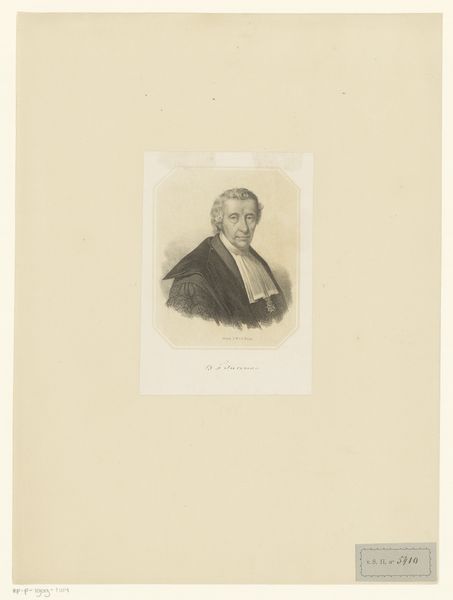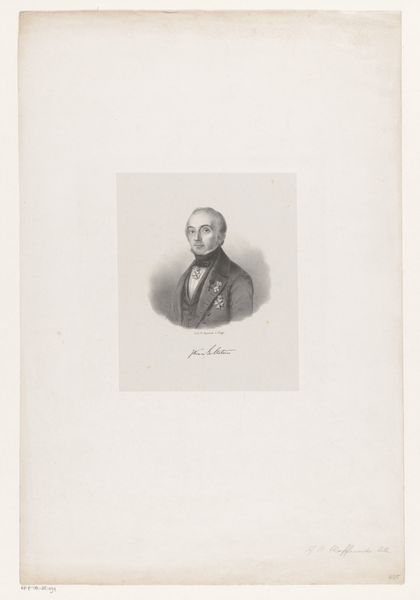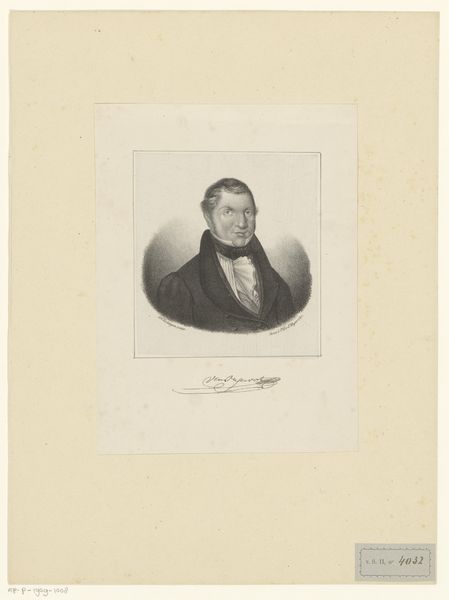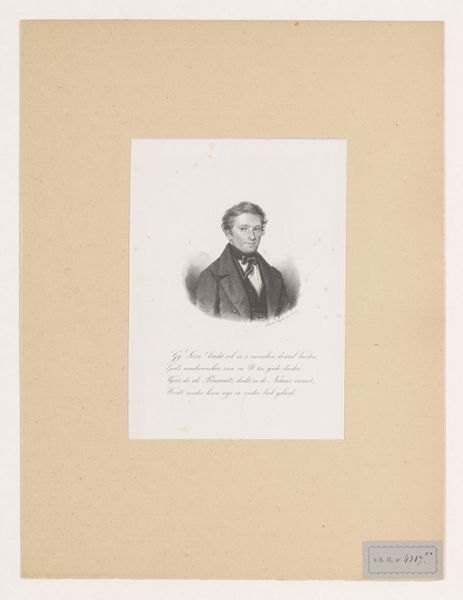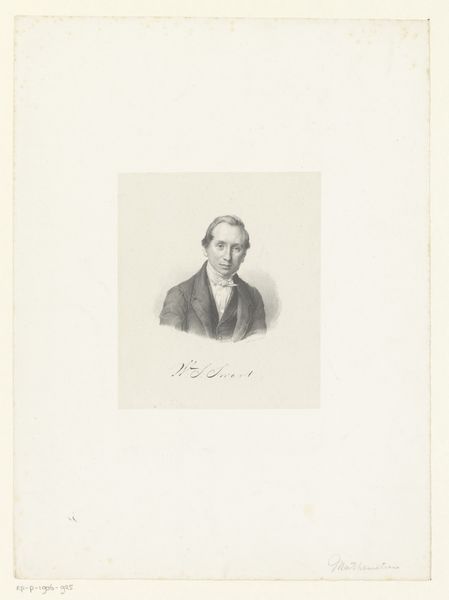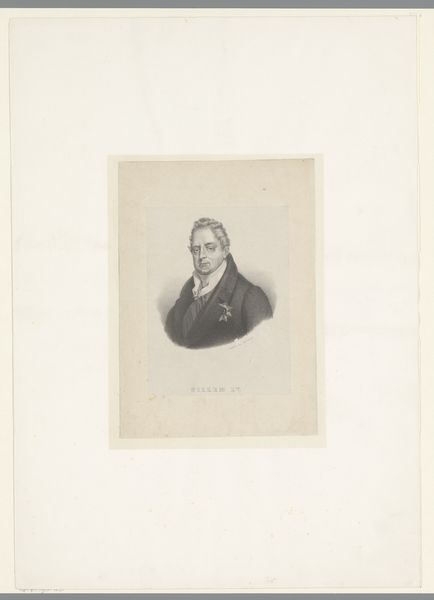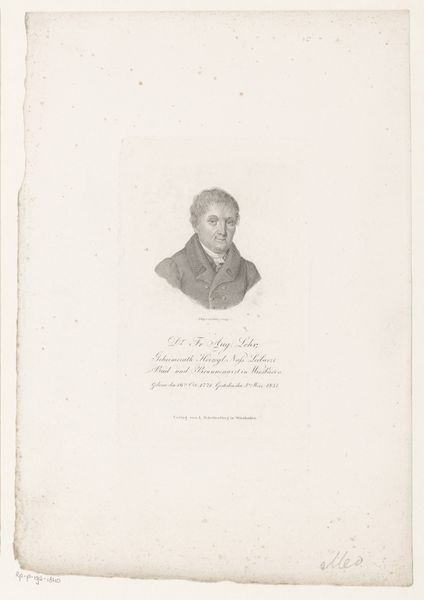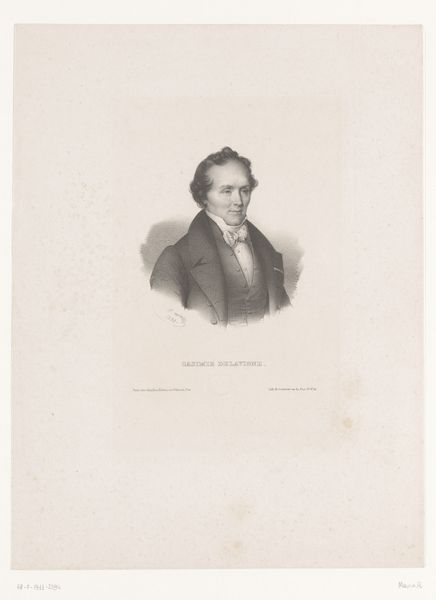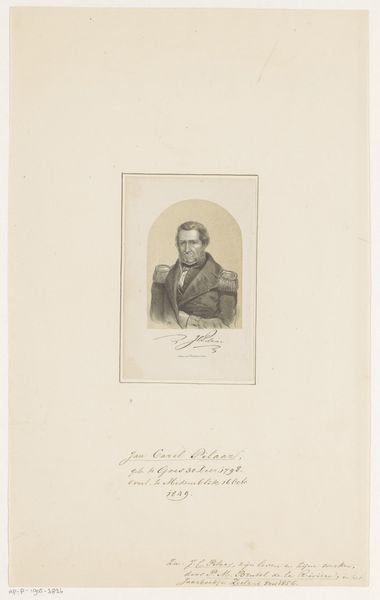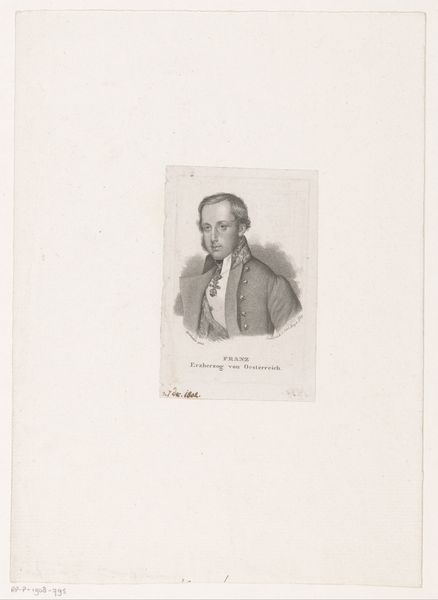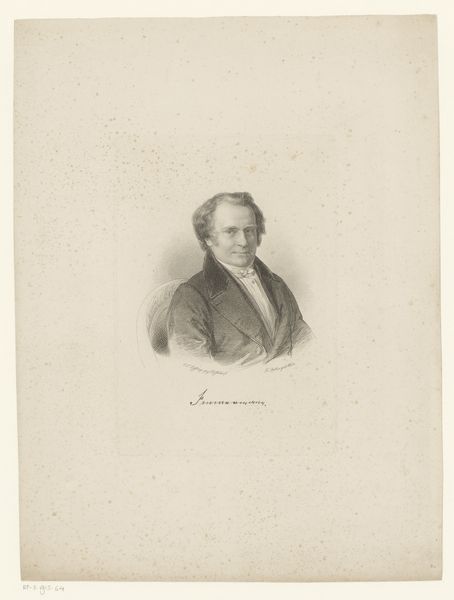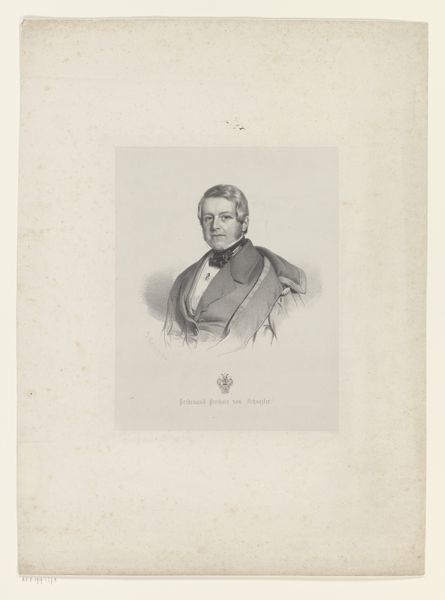
print, engraving
#
portrait
#
pencil drawn
#
neoclacissism
# print
#
old engraving style
#
history-painting
#
academic-art
#
engraving
Dimensions: height 209 mm, width 150 mm, height 322 mm, width 266 mm
Copyright: Rijks Museum: Open Domain
Curator: This is a portrait of Elias Annes Borger, made sometime between 1837 and 1840, by J. Sartor. It’s an engraving, a print, which aligns with its historical moment, nestled between neoclassicism and academic art. Editor: My first impression? It evokes a sense of stern intellectualism. The frame within a frame lends a formal, almost official air. And the figure’s gaze is direct, uncompromising. Curator: Borger was a Dutch theologian and scholar of classical languages. Looking closer, we can decode how the artist communicated Borger's identity, situating him within the academic elite. Consider the stern facial expression and formal attire. The artist uses those symbols to promote a vision of leadership within 19th century Dutch society. Editor: Absolutely. The symbols here reinforce the historical weight. That black coat carries an austere significance, perhaps linking him visually to a lineage of thinkers and reformers. What resonates with me is the implied weight of tradition bearing down upon him. Curator: That is interesting, since Neoclassicism and Academic Art, were modes used at this time in order to revive notions of rationalism during tumultuous decades across the continent. If we analyze how such formal prints became fashionable we begin to understand how these pieces attempted to assert power using tradition to uphold ideals. Editor: And this kind of precise, linear engraving speaks to that desire for order and clarity. I find it intriguing how visual styles can both reflect and shape societal values. It gives the idea of enduring influence through crafted images, like carefully constructed public memory. Curator: I agree. By viewing "Portret van Elias Annes Borger," as more than just a representation of a man, but also as an encoding of societal values, the viewer gains insights into the construction of knowledge during the 19th century. Editor: Exactly. What seemed like a simple portrait becomes a mirror reflecting broader societal aspirations and anxieties. The figure and ground relationship becomes almost reversed; Elias Annes Borger as symbolic touchstone more so than simply Borger the person.
Comments
No comments
Be the first to comment and join the conversation on the ultimate creative platform.

